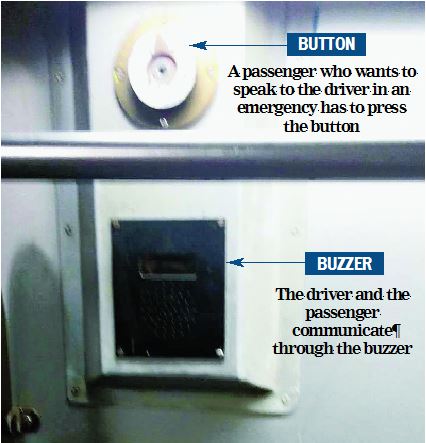Passengers in the Metro coach whose doors had Sajal Kumar Kanjilal’s hand stuck between them on Saturday evening alleged that the voice communication system through which they tried to alert the driver did not function.
At least two passengers in the third coach from the front, which Kanjilal had tried to board and died after being dragged by the train into the tunnel, said they saw multiple passengers trying in vain to alert the driver through talkback units.
The Metro authorities, however, said an inspection after the accident revealed that all talkback units in the third coach were functional.
Sources said the driver had told senior officials that he had taken at least one call.
The Metro spokesperson declined comment since a probe by the commissioner of railway safety had been ordered.
“I saw several people huddled in front of one such unit near a door facing the platform for Dum Dum-bound trains. They pressed the button several times but could not speak to the driver,” a passenger said.
Another passenger said he had called the Metro emergency helpline — 182 — after failing to alert the driver through a talkback unit. The person who answered the call said the train was being stopped and passengers should evacuate through the rear coaches that had not yet left the platform.
All air-conditioned Metro rakes have talkback units through which the driver is supposed to guide passengers in an emergency.
While the older AC trains have two such units in each coach, the newer rakes — including the one that was involved in Saturday’s fatal accident — have four units in each.
The units have a button and a buzzer. A passenger who wants to speak to the driver in an emergency has to press the button and speak to the driver.
“The units on the latest AC trains in service have a call-waiting facility. If multiple passengers call simultaneously, calls will be kept on waiting,” he said.
Metro was on one of the older AC rakes on Sunday afternoon and pressed the button on the talkback unit. A response did come from the driver.
Calcutta’s transport lifeline has long been plagued by the problem of lack of proper communication between passengers and the driver as well as the Metro authorities.
Passengers of snag-hit trains stranded in the tunnel would always allege that there was no proper announcement.
In modern mass rapid transit systems, control rooms take over communication on a train in an emergency and directly address passengers through the public address systems as the driver and guard are busy troubleshooting.
The absence of an integrated communication platform between the guard, the control room and passengers was acutely felt on December 27, when a fire broke out in an AC coach between Rabindra Sadan and Maidan stations.
The train was stranded in the tunnel for a long time. Some passengers broke windowpanes with fire extinguishers and jumped out.
At least five people suffered fractures.
The commissioner of railway safety (CRS) had recommended after investigating the December accident that the communication system be upgraded to ensure that the control room could directly speak to passengers.
The CRS had also recommended that after every trip, recordings of the conversation through the talkback unit be sent for analysis to prepare the authorities for better handling of an emergency situation.
“These recommendations have not yet been implemented. These are long-term projects and cannot be implemented so soon,” a senior Metro official said.










